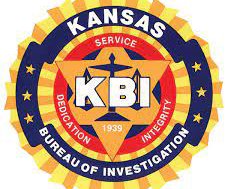The Thanksgiving holiday brings family, food and festivities — but it can also bring hidden hazards for pets. As kitchens fill with tempting aromas and guests come and go, Susan Nelson, clinical professor and veterinarian at Kansas State University’s Hill’s Pet Health and Nutrition Center, is reminding pet owners to keep safety in mind during celebrations.
“Many Thanksgiving foods and decorations can pose serious risks to pets if ingested or mishandled,” Nelson said.
Keep bones out of reach and do not intentionally feed bones to your pets. Bones can cause tooth damage, become a choking hazard, or lead to gastrointestinal obstructions or perforations, Nelson said. Ingesting corncobs can also result in fatal gastrointestinal complications.
When preparing food, do not feed any raw meat scraps to your pet, as these can potentially make your pet — as well as people living or interacting with them — sick.
“There are other things you can feed your pet instead of fatty foods,” Nelson said. “Gravy, dark meat, ham, butter and meat drippings can lead to gastrointestinal upset and, in some cases, fatal pancreatitis. As an alternative, offer vegetables not cooked in butter, chopped apples, plain pumpkin or sweet potatoes.”
Raw dough can cause bloating and alcohol poisoning. Garlic, onion, leeks and chives — often used in dressings and gravies — can destroy red blood cells in pets if ingested.
“There are a number of common foods and beverages that could be toxic to your pet if ingested,” Nelson said. “Keep chocolate, grapes, raisins, currants, macadamia nuts, artificial sweeteners like xylitol, and alcoholic and caffeinated beverages out of reach.”
If possible, Nelson suggests using baby gates or other barriers to block your pet’s access to the kitchen or food preparation areas to prevent them from getting into unsupervised food. Make sure garbage is placed in closed, pet-proof containers and kept out of reach.
Be sure to keep baking twine and foil out of reach and in the garbage as well, as they can also cause GI obstruction, Nelson said, and the lingering scent of food on them makes them a temptation for your pet.
“When decorating your home, be mindful of things that could be harmful to pets,” Nelson said. “Consider using battery-operated candles, as burning candles pose a risk of burns to your pet and, if tipped over, could lead to a house fire.”
If decorating with floral arrangements, be aware of what flowers are included. Lilies can be deadly to cats and harmful to dogs, depending on the species, Nelson said. Any part of the lily — including pollen — is toxic to cats, she said.
“It’s also important to know if guests make your pet nervous,” Nelson said. “If they do, put the pet in a closed room away from guests with something to distract them, such as a toy or food puzzle. Be sure to watch the doors as guests arrive and leave so your pet doesn’t escape and become lost.”
Some pets may need anxiety medication while guests are visiting, so Nelson suggests speaking with your veterinarian for the best recommendations. It’s also a good idea to have your pet microchipped and include ID tags on their collar in case they wander off. Make sure your contact information is up to date.
If you suspect your pet has ingested something dangerous, contact your veterinarian immediately or call the ASPCA Animal Poison Control Center at 888-426-4435 or the Pet Poison Helpline at 855-764-7661 for guidance.





